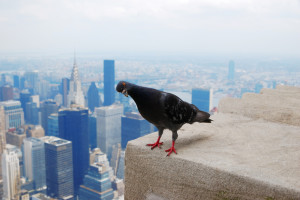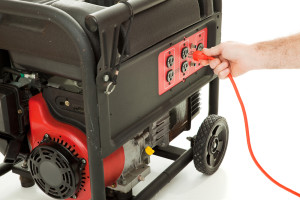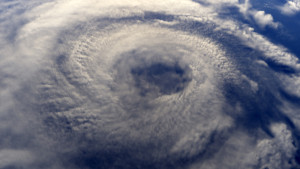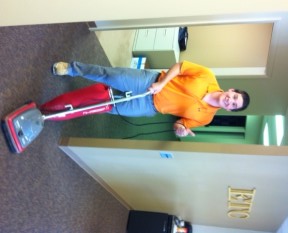Always Up Fore A Good Cause!


Alfred Hitchcock had bird issues (especially seagulls), but in the Baltimore-Washington area, the most common pest birds are pigeons, house sparrows, and starlings. These birds are undesirable if they land, roost, and nest on or in our buildings because they bring unwanted noise, odor, and often disease. Plus, no one likes their deck, patio, lawn furniture, or other belongings adorned with bird droppings. 
If you’ve ever tried getting rid of pest birds, you probably know that they annoyingly adapt to many control methods and won’t go away without a fight. After all, they’re called “pests” for a reason. So how do you win this battle and get them to leave for good? You have to think like the bird. Birds seek flat, unobstructed roosting surfaces and they are looking for food. If you take these two things away, they’ll find somewhere else to go.
To reduce or eliminate surfaces on which pest birds roost (i.e. ledges, railings, parapets, awnings, etc.) you should consider installing one or more physical barriers, which typically include spikes (plastic or metal), netting, and electric barriers. Physical barriers are humane, eco-friendly and cost-effective solutions that have high success rates. Spikes and netting are inexpensive and easy to install, but are best suited for hidden areas or where building aesthetics is not a priority. Wires and electric barriers (low-voltage, non-lethal) are less obtrusive and often virtually invisible.
Another great way to make flat roosting surfaces unavailable is to cover them with wood or metal sheathing at a 45° or steeper slope. If you are considering a roof or façade repair/replacement project, this would be the perfect time to implement these methods.
Other bird control systems like sound, traps, aversion chemicals and killing are inhumane, expensive, temporary, and/or ineffective options. We and the Humane Society do not recommend them. As for plastic owls and hawks, they only work on the stupid birds. Savvy city birds aren’t fooled.
The last thing to do to keep birds away is limit availability to food. Implementing better trash management and asking residents to not feed them are two ways to encourage birds to inhabit other areas.
Since every building has its own unique roosting sites and bird access, there is no “one size fits all” bird control option. Be sure to have a qualified professional discuss with you which options are the most appropriate for your building and goals

 According to the latest addition of Engineered Wood, the building industry is getting quite SOCIAL!
According to the latest addition of Engineered Wood, the building industry is getting quite SOCIAL!

 Drain flies, also known as sewer flies or moth flies (not moths though), are about the size of gnats and can be quite annoying as they habitually show up in kitchens, bathrooms, and basements. These fuzzy little pests get their name because they lay their eggs (up to 200 of them) in the hair, food, grease, and other organic matter that accumulates within your drain pipes.
Drain flies, also known as sewer flies or moth flies (not moths though), are about the size of gnats and can be quite annoying as they habitually show up in kitchens, bathrooms, and basements. These fuzzy little pests get their name because they lay their eggs (up to 200 of them) in the hair, food, grease, and other organic matter that accumulates within your drain pipes.
If you’re interested in emancipating your drain pipes, the first thing to do is identify the afflicted drains so they can be targeted for treatment. Locate all your floor drains and sump pump openings. Also, look under your sinks and dishwasher, and behind the refrigerator and water heater. Use a flashlight to inspect the inside of your drains for slime or sludge, or use a long screwdriver and lightly scratch the inner drain pipe surfaces, probing for buildup.
The next step is to remove any organic materials collected in the drain. Sorry, but all the drain cleaner in the world will usually not fix the problem. Home remedies like bleach, vinegar, and boiling water will not work either. These treatments may kill the adult flies inhabiting your drains, but will not destroy the breeding grounds. To do this you must physically clean out the drain pipe and any drain covers with a pipe brush. Especially bad clogs may require the use of a plumbing snake to remove clumps of hair or other blockage. Once the buildup is removed, your problem is solved, once the adult drain flies die off that is!
Drain flies can also breed in the soil around leaking sewer pipes and can enter your house through cracks or gaps in the floor slab. If you find yourself in this situation, the leaky pipes should be repaired immediately and the larvae infested soil must be removed.
If you are experiencing drain flies, it is probably worth having the inside of your plumbing visually inspected by a professional with a video camera. Depending on the severity and type of the sludge, you might find that you have serious drainage issues and/or degrading drain lines

 After the extensive power outages caused by Hurricane Sandy and the freak derecho storm in late June and with predictions of a rough winter, many people have purchased portable generators to keep the lights on and the beer cold in anticipation of the next big storm.
After the extensive power outages caused by Hurricane Sandy and the freak derecho storm in late June and with predictions of a rough winter, many people have purchased portable generators to keep the lights on and the beer cold in anticipation of the next big storm.
Although generators are a great way to provide some temporary creature comforts, they don’t come without hazards. Most people are aware exhaust fumes from gasoline-powered equipment are toxic and running a generator within or too close to your home can be lethal. Nonetheless, people continue to be hospitalized or killed by carbon monoxide poisoning due to generator misuse.
Exhaust isn’t the only danger. The method by which a generator’s power is utilized can also be deadly. Often people attempt to power the entire house by “back feeding” the generator output into an electrical outlet (such as a dryer receptacle). Not only is this illegal in most jurisdictions, it could potentially electrocute linemen working to restore electrical service.
If you feel the need to use a portable generator during the next power outage it’s best to be prepared and have the generator properly wired to a transfer switch by a qualified electrician. With a properly wired generator installed a safe distance from the house, you can relax in anticipation of the next power outage.

 Hurricane Sandy certainly caused a lot of problems relative to water intrusion issues that occurred in places where they had not been previously seen. Site drainage around buildings is very important and numerous problems were reported due to clogged gutters, downspouts and other water drainage components that need to be carefully checked and maintained on a regular basis.
Hurricane Sandy certainly caused a lot of problems relative to water intrusion issues that occurred in places where they had not been previously seen. Site drainage around buildings is very important and numerous problems were reported due to clogged gutters, downspouts and other water drainage components that need to be carefully checked and maintained on a regular basis.
We have also seen several concerns related to problems with storm sewer systems and underground lines that service basements or low lying drains. If these important drainage features become clogged, a large storm like Sandy can cause extreme water back-up that can readily penetrate into buildings. In order to check storm sewer lines and underground drain lines, consider retaining a qualified plumber to run a camera through these lines to check for obstructions and/or breaks in the pipe walls or joints. Keeping these lines clear can greatly help prevent unwanted problems.

 Field work or not, Sandy does not allow us to come back and track dirt into the office. Those that do…pay the price! Luke, our newest engineer, had to learn the hard way. A quick trip to the cleaning closet and he was back in Sandy’s good graces. It’s nice to know this guy can not only operate a Delmhorst, Psychrometer and thermal camera….but also a good ol’ fashion HOOVER.
Field work or not, Sandy does not allow us to come back and track dirt into the office. Those that do…pay the price! Luke, our newest engineer, had to learn the hard way. A quick trip to the cleaning closet and he was back in Sandy’s good graces. It’s nice to know this guy can not only operate a Delmhorst, Psychrometer and thermal camera….but also a good ol’ fashion HOOVER.
Just for your information, I wouldn’t ask him to do windows!

The next time you are in Baltimore, check out the 2,000 square foot living wall covering at One East Pratt Street. We wonder if the window washing crews will have to learn to trim the plants to help maintain the wall, because most landscapers do not work on the side of buildings.

Keep on the lookout for Japanese Knotweed – it is on the list of the top 100 worst weeds, worldwide. Locally, it has spread from Nova Scotia to North Carolina, so those in the Mid-Atlantic region should be alert and remove this pervasive weed. The plant is so tenacious that it is known to cause damage to concrete and grow through asphalt pavement. This weed is so nasty it even caused delays during some of the construction for the London Olympic venues.
Read more about this damage causing plant and how to get rid of it on these two links
http://www.journalofcommerce.com/article/id51640/–concrete-busting-weed-can-threaten-projects
http://www.mdinvasivesp.org/archived_invaders/archived_invaders_2009_09.htm

 Since the first discussion of the 2012 Olympic Games in London, engineers were active participants in the preparations for these games to start, but their accomplishments were merely the backdrop for the athletes. Structural and other engineers worked non-stop to provide the Olympians with venues to perform their 26 sports, seating for hundreds of thousands of spectators to watch the events, space for about 20,000 journalists, broadcasters, and photographers in need areas to recount the action for us, and transportation infrastructure to get them all where they needed to go. Tens of thousands of new members of the construction and structural engineering field were hired to complete this task. The Olympics had a budget of 9.3 billion Euros (11.4 billion US Dollars) to plan and support the games.
Since the first discussion of the 2012 Olympic Games in London, engineers were active participants in the preparations for these games to start, but their accomplishments were merely the backdrop for the athletes. Structural and other engineers worked non-stop to provide the Olympians with venues to perform their 26 sports, seating for hundreds of thousands of spectators to watch the events, space for about 20,000 journalists, broadcasters, and photographers in need areas to recount the action for us, and transportation infrastructure to get them all where they needed to go. Tens of thousands of new members of the construction and structural engineering field were hired to complete this task. The Olympics had a budget of 9.3 billion Euros (11.4 billion US Dollars) to plan and support the games.
Curious as to what buildings had to be built? The most prominent structures are the Olympic Stadium, Olympic Village, Aquatics Center, Velodrome, Media Transportation Mall, and two Media Centers. The Olympic stadium is a sunken concrete bowl with a 170-foot high roof housing 25,000 seats in the lower tier and 55,000 seats in removable upper tier. The MPC, one of the media centers, is a 300,000 square foot green office and the other media center, IBC, is a 550,000 square foot studio/office. After the Olympic Games, the London Development Agency plans for both of these offices to be available for creative industries and higher educational use in hopes of creating new, permanent, jobs.